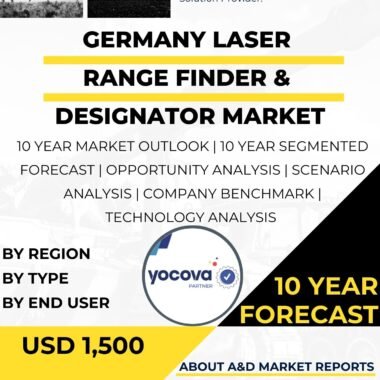Description
The large caliber ammunition market in Brazil is characterized by its strategic importance to both the domestic defense sector and the broader regional security outlook. This market is driven mainly by the modernization efforts of Brazil’s armed forces and law enforcement agencies, which require advanced and reliable large caliber ammunition for various military and security applications. Brazilian manufacturers, alongside international defense contractors, play a significant role in supplying a diverse range of large caliber munitions to meet the evolving needs of the country’s military ground forces, as well as naval and air defense units.
Brazil has a well-established defense manufacturing base, with companies such as CBC (Companhia Brasileira de Cartuchos), IMBEL (Ind?stria de Material B?lico do Brasil), and EMGEPRON contributing significantly to production capabilities. These producers invest in research and development to enhance the performance, precision, and lethality of large caliber rounds, aligning with global technological advancements such as improved guidance mechanisms and environmentally friendly materials. The presence of such manufacturers facilitates both domestic supply and export opportunities, positioning Brazil as a key player in the Latin American ammunition market.
The demand within Brazil is influenced by several factors, including ongoing military modernization programs aimed at replacing outdated weaponry with more capable systems, thereby necessitating corresponding ammunition upgrades. Furthermore, the Brazilian government’s efforts to strengthen security forces to address internal and regional threats underpin steady consumption of large caliber ammunition. Law enforcement agencies rely increasingly on heavy rounds for specialized operations, border security, and counter-insurgency missions, contributing to the sustained demand for these products.
Export markets also form a critical component of Brazil’s large caliber ammunition business. Brazil has cultivated strategic defense partnerships and supply agreements with various countries, particularly within Latin America and occasionally reaching markets in Africa and Asia. Brazilian manufacturers benefit from competitive cost structures, skilled labor, and well-developed logistics infrastructure, including access to major ports, which bolster the export potential of large caliber ammunition. This international outreach helps mitigate domestic market cyclicality and supports continuous production scaling.
Technological progress in this market is notable for the adoption of precision-guided munitions and enhanced ballistic performance tailored to modern combat requirements. Brazil is gradually integrating smart ammunition technologies capable of improved accuracy, extended range, and lethality, which are critical for artillery shells and tank rounds. These innovations not only elevate Brazil’s defense capabilities but also improve the competitiveness of its ammunition exports on the global stage. Environmental aspects, such as the push for lead-free ammunition, reflect the increasing influence of regulatory frameworks and sustainability concerns within Brazil’s defense industry.
Market segmentation reveals that the majority of large caliber ammunition use is concentrated in military applications, including ground forces? artillery, armored vehicles, and air defense systems. Naval forces also utilize large rounds for shipboard weapons and coastal defense. Civilian usage of large caliber ammunition is markedly limited, regulated stringently due to safety and legal reasons, which preserves the market predominantly for institutional users. The interaction between government procurement cycles and geopolitical developments, including regional stability issues, can cause fluctuations in demand but generally maintains a steady upward trend driven by modernization and replacement programs.
Supply chain dynamics in Brazil’s large caliber ammunition market benefit from vertical integration where possible, with some manufacturers producing key components in-house. This integration strengthens supply chain resilience and supports product quality control. Local production also reduces dependence on foreign imports and mitigates impacts from global supply disruptions. Partnerships and technology transfer agreements with international defense companies facilitate access to cutting-edge manufacturing techniques and materials critical to modern large caliber ammunition, reinforcing Brazil’s market position.
Economic conditions and government defense budgets are important determinants of market growth, with funding allocations influencing procurement volumes. Brazil’s focus on regional security cooperation and involvement in multinational exercises necessitates interoperability with NATO and other allied standards, which drives the adoption of specific calibers and ammunition types harmonized with those used by partner nations. This standardization also supports export opportunities where Brazilian ammunition can seamlessly integrate into allied weaponry systems.
Challenges facing the large caliber ammunition market in Brazil include regulatory complexity, illicit trafficking issues in border regions, and the need for continual investment in advanced manufacturing technology to keep pace with global competitors. However, government initiatives to improve oversight, combined with increasing enforcement against illegal ammunition distribution, aim to bolster the legitimacy and safety of the market. The industry?s future orientation involves embracing innovation, expanding production capacity, and deepening international collaboration to meet both domestic security needs and global demand trends.
In summary, the large caliber ammunition market in Brazil is a robust segment shaped by defense modernization, skilled domestic production, strategic exports, and ongoing technological development. Its growth trajectory is steady, supported by government policy, regional security imperatives, and manufacturers? ability to respond to evolving military requirements. The market’s continued expansion is linked to evolving combat challenges and Brazil?s ambition to sustain an advanced, self-reliant defense industrial base capable of serving both national and international clients effectively. This makes Brazil a key contributor to the wider Latin American large caliber ammunition sector and an emerging player on the global defense stage.




